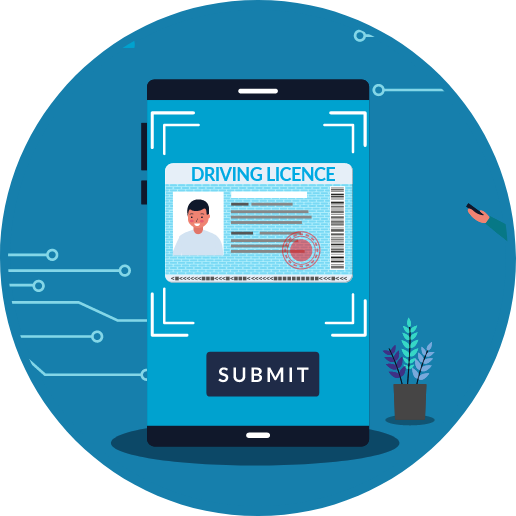5 things to look for when checking an identity document

Whatever industry you are in, you may well have been presented with an identity document at one point or another; be it for a Right to Work (RTW) check or a Know Your Customer (KYC) check. But how easy is it to spot a fraudulent identity document?
TrustID recently ran two online polls to gather data on opinions towards identity documents and their confidence in checking them. First, we asked how confident the respondent felt when manually checking an identity document and we found that 60% didn’t feel confident. We then asked if the respondents ever thought they had been presented with a fake identity document and 72% believed that they had.
Spotting a fraudulent identity document is no easy task! With thousands of global documents in circulation, it’s unlikely that you will be an expert on all of them. So, here’s a few tips to help:
Look out for spelling mistakes
When analysing an identity document, one of the clearest signs of the document being fraudulent is a misspelling. Although this could seem obvious, they are easy to miss and, over the past few years our expert document team have seen many identity documents with spelling errors, in various languages.
Are the fonts consistent?
Many identity documents utilise unique fonts as a security feature. For example, innovative letters or numbers that can vary series to series, country to country. These little font changes can be incredibly hard to identify and replicate by a fraudster, however, our expert document analysts are trained to identify these anomalies.
Be aware of behavioural indictors
If you are seeing someone face-to-face to check their identity document, you may be able to pick up on signs that something is not quite right. Are they hesitant about handing the document over or claim to have forgotten it? Are they asking questions about what checks will be done and who will be conducting them? Although being nervous or asking questions is no proof that the document they are presenting is fraudulent (after all who isn’t nervous at an interview!), it may be a reason to be a little more cautious.
Check key security features
All identity documents contain security features to protect themselves from being replicated. These can range from biometric chips to the type of paper on which the document is printed. However, some of the security features are so small and discreet they can be a real challenge to spot. There are websites online such as Edison TD and Prado that allow you to view what a genuine identity document should look like. Through using these websites, you may be able to cross reference the document you are checking with a real example.
Don’t be lulled into a false sense of security
Although you may be inclined to be more trusting of the documents you see regularly, this may not actually be wise. With the recent changes surrounding Brexit legislation, more fraudsters could be turning to UK passports due to the fact it gives you the Right to Work in the UK. So, even if you think you know the passport, there is still reason to be cautious and take reasonable steps to ensure its validity.
How can online verification help?
Using technology can help you introduce a centralised, transparent and consistent process. A process which your staff can easily follow, with minimal training and from wherever they are working. The checks are auditable, and records can be stored securely and centrally. What’s more, putting processes such as online verification in place may act as a deterrent, reducing the number of fraudulent documents initially presented to you.
Sign up to receive updates
Receive notifications from TrustID direct to your inbox. Simply fill out your email address in the form below.
Want to find out more?
We’d be really happy to chat through your requirements and offer advice on the best service for your business.
Tel: 0118 466 0822 or email us.
Request a callback


